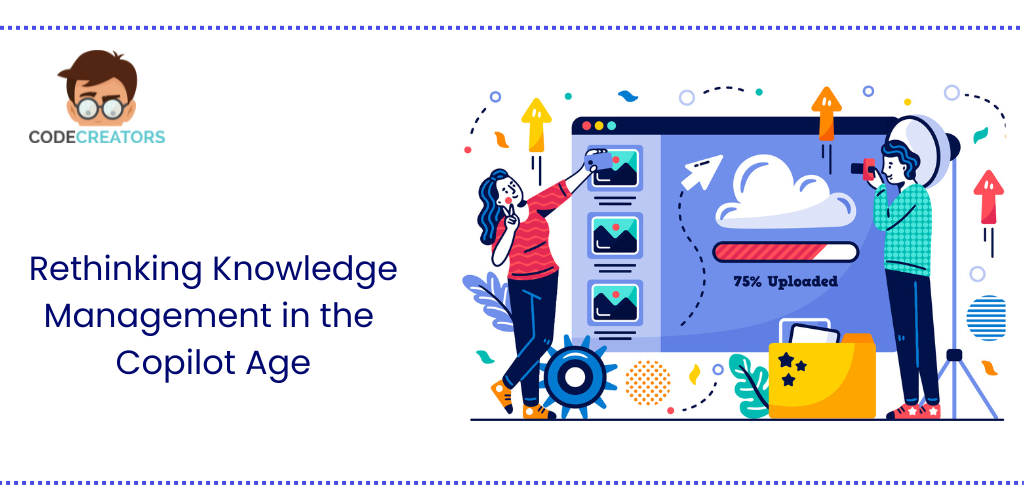From Power BI to Fabric: A Seamless Journey Toward Smarter Insights

The data analytics domain is highly volatile. Organizations are looking for deeper insights, faster performance, and easier data handling experiences. This transformation is a driving factor for many businesses towards Power BI Premium to Fabric migration. Fabric not only provides a multi-dimensional analytical platform but also comes with advanced data engineering, better governance, and improved workflows. It also enhances the power of Power BI and creates a connected system for smarter decisions.
Power BI remains a top business intelligence tool. But data workloads have grown. Teams need flexibility. They need structured pipelines. They need one place where analytics, storage, and AI work together. Fabric delivers this vision. It provides a modern foundation for companies that want to expand beyond dashboards and build complete analytics ecosystems.
Why Companies Are Moving from Power BI Premium to Fabric
Power BI Premium offered strong performance and dedicated capacity. However, it was mainly centered around reporting. The requirements of today’s data environments go beyond that. Businesses want an all-in-one package that includes ingestion, transformation, storage, and governance capabilities. This requirement leads to the growth of Power BI to Fabric migration.
Fabric is a combination of lakehouses, data pipelines, real-time analytics, and advanced governance. These capabilities grant businesses more authority. By integrating everything under a single umbrella, they resolve the complexity issue. The teams who transit from Power BI Premium to Fabric will have more efficiency and better scalability in the future.
The journey becomes easier because Fabric supports existing Power BI investments. Reports stay intact. Workspaces stay organized. Migration becomes a smooth transition rather than a full rebuilding.
How to Enable Fabric in Power BI
Many teams ask how to start. The first step is learning how to enable Fabric in Power BI. It starts inside the Power BI Admin portal. Admins turn on Fabric capabilities for their organization. Once enabled, users can access lakehouses, warehouses, pipelines, and the full Fabric experience.
The process is simple and does not interrupt existing BI workflows. Power BI users keep their dashboards. They keep their datasets. But now they also gain access to a modern data platform. This transition supports both new and experienced users. It gives teams a chance to improve their data approach without losing familiar tools.
This is one reason why companies prefer Microsoft Power BI Premium to Fabric. It combines stability and innovation in one ecosystem.
Supporting a Smooth Power BI Premium to Fabric Transition
A strong migration strategy helps teams move without stress. Fabric supports existing Power BI content during a Microsoft Power BI Premium to Fabric transition. This reduces risk and keeps users comfortable. Most organizations migrate in stages. They start with workspaces that need more storage or stronger performance. Then they migrate workloads that require advanced transformations or better governance.
Teams also evaluate their models, permissions, and data flows. They clean up old content and design a better structure for Fabric. This improves long-term performance and makes analytics more reliable.
Organizations take this approach because they want a system that grows with their data.
Migrate Power BI Workspace to Fabric with Better Governance
Fabric uses a unified workspace structure. This helps teams manage permissions, pipelines, reports, and storage in one place. When companies migrate Power BI workspace to Fabric, they create a clean and connected environment. They reduce duplication, build better data relationships. They improve ownership across departments.
The new workspace model prepares organizations for stronger governance and easier lifecycle management. Teams understand where their data sits and how it flows. This builds trust and improves collaboration between departments.
Fabric also supports the same interface Power BI users know well. This reduces training time and helps users adapt quickly.
Do You Need Microsoft Fabric to Use Power BI?
A common question is: do you need Microsoft Fabric to use Power BI? The answer depends on your goals. Power BI still works without Fabric. But organizations that want deeper data capabilities benefit from the upgrade. Fabric offers stronger pipelines, better engineering tools, and unified governance. It gives teams more control over structured and unstructured data.
Fabric becomes the next step for companies that want more than reports. It supports AI, real-time analytics, large-scale modeling, and enterprise-level data operations. Power BI stays central to the experience. Fabric builds the rest of the ecosystem around it.
Power BI Premium to Microsoft Fabric Creates a Modern Data Path
The shift from Power BI Premium to Microsoft Fabric helps companies create a modern data strategy. Fabric supports advanced analytics. It brings storage, computation, and transformation into one platform. It reduces complexity and cuts down on tool sprawl.
This integrated approach helps businesses focus on insights rather than infrastructure. Teams move faster. Reports refresh smoothly. Data stays organized in one place. Fabric also supports AI-driven features that enhance Power BI dashboards and accelerate insights.
The journey from Power BI to Fabric sets the stage for long-term innovation and smarter enterprise analytics.
Conclusion
The migration from Power BI to Fabric is a huge leap for modern analytics. Power BI Premium to Fabric migration provides businesses a common platform with secure storage, enhanced governance, and smarter analytics. Fabric not only extends the capabilities of Power BI but also gets the organization ready to embrace a more intelligent and interconnected data ecosystem.
If you want expert Power BI Consulting Services for Power BI Premium to Fabric migration, data modeling, or Fabric onboarding, Code Creators is your answer for sure.
Contact us today, and we will make your analytics journey smooth, strategic, and future ready.
FAQs
1. Why are organizations moving from Power BI Premium to Fabric?
They want stronger analytics, modern storage, unified governance, and advanced data capabilities. Fabric supports all these needs in one platform.
2. How do I enable Fabric in Power BI?
You turn it on in the Power BI Admin portal. Once enabled, your workspaces gain access to Fabric features without disrupting current reports.
3. What happens when I migrate a Power BI workspace to Fabric?
Your content stays intact, but you gain a modern workspace structure with better storage, pipelines, and governance tools.
4. Do I need Microsoft Fabric to get the full Power BI experience?
You can use Power BI alone. But Fabric adds lakehouses, warehouses, pipelines, and AI features that enhance analytics and long-term scalability.
5. Can Code Creators help with Power BI Premium to Fabric migration?
Yes. Code Creators offers planning, workspace migration, modeling, and full Fabric onboarding. Their team ensures you transition smoothly without disruptions.


